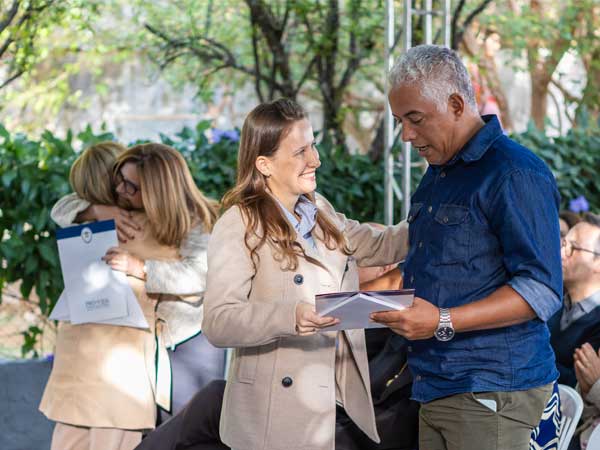Joan of Arc: a brief, virtuous life of courage
Joan of Arc: a brief, virtuous life of courage
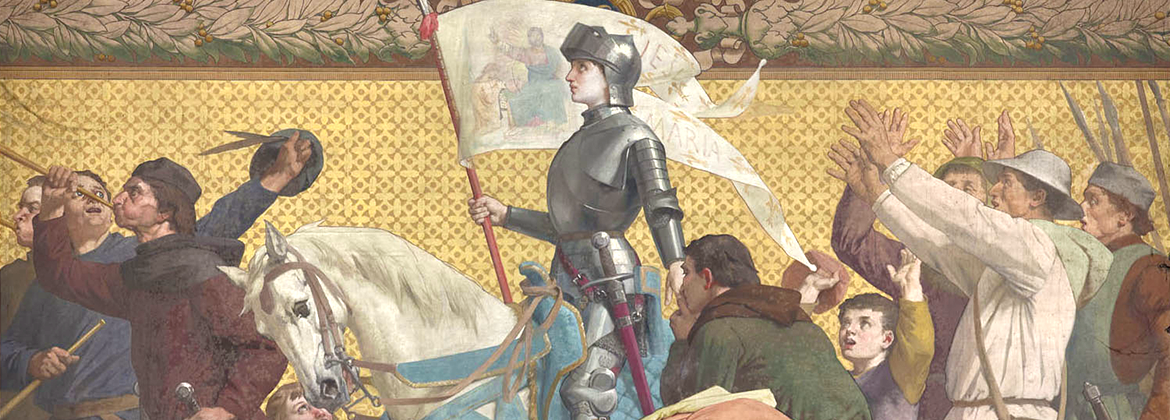
“Joan of Arc, without tomb and without portrait, you who knew that the grave of heroes is the heart of the living”
André Malraux
Those who inspire us, often, are ordinary people who touch our hearts by performing uncommon feats. Through their example, we feel that the extraordinary is possible. Joan of Arc was an example: an improbable heroine who still inspires us to this day.
According to historian Helen Castor (2021, p. 19), “Her light is brighter than any other figure of her time and space. Her history is unique, and at the same time, universal in its reach.”
Patron saint of France and heroine, she is one of the greatest examples of conduct and courage throughout history. But how did an illiterate young woman manage to get such recognition during her lifetime?
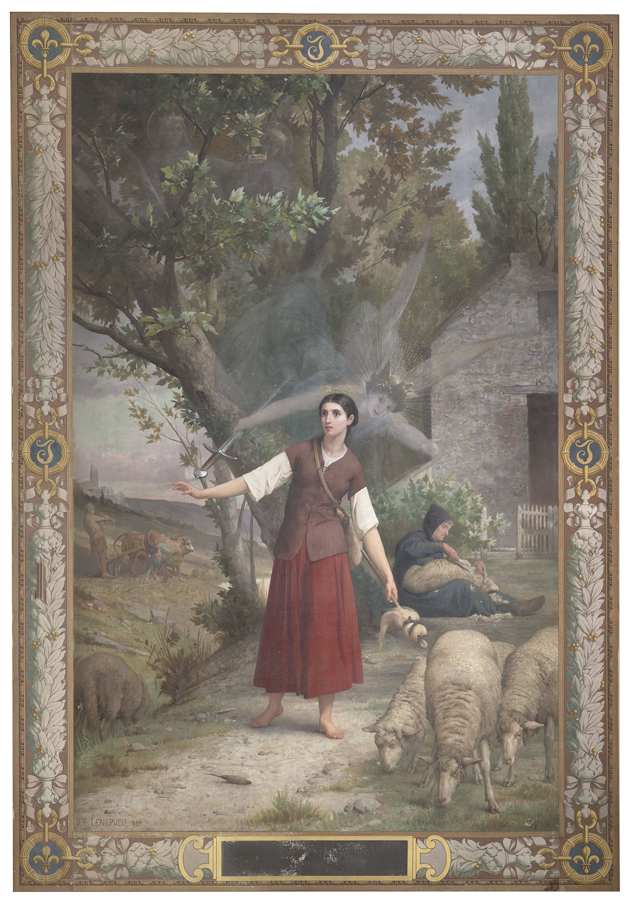
In 1412, Europe was going through the dark times of the Inquisition. France was a divided Kingdom, facing the Hundred Years’ War with an extensive territory dominated by England.
It was in that year that Joan of Arc was born, in Domrémy, a small French town. Her childhood friends used to say that “Joan was a good, simple and affable girl. She would often go to church and sacred places.” (Pernoud, 1996, p.14).
At 13, she started hearing voices, initially of Archangel Saint Michael, and then Saint Catherine of Alexandria, and Saint Margaret of Antioch. “Before anything, he would tell me that I must be a good child, and that God would help me. Among other things, he told me that I must go to rescue the King of France…” (Pernoud, 1996, p. 22).
At 16, Joan left her home and headed to a fortress, in Vaucouleurs, to tell its commander Robert de Baudricourt, that she must be taken to the Dauphin (the heir to the French throne), to help him recover the French throne. In their first encounter, Robert asked them to send her back home and that her parents give her a good spanking. Only in their third encounter, almost a year later, did Commander Robert decide to take her to meet Dauphin Carlos VII. At that point, Joan had already obtained support from the local people and her guard was built spontaneously.
In only 11 days, Joan and her small entourage crossed about 600 kilometers in territory dominated by the English. Upon arriving in Chinon, Carlos VII tried to trick her, making it appear that another person was the Dauphin, but Joan promptly recognized him. She impressed him even more in a private meeting when she told him things that, according to him, only God could know.
Nevertheless, she was taken to Poitiers to be examined by priests and masters of the University of Paris. Their conclusions were: “in her has been found nothing evil; only good, humility, virginity, devotion, honesty, simplicity” (Pernoud, 1996, p. 50).
Joan referred to herself as “Joan the maiden” (Pucelle), a title with a profound meaning of purity. For this reason, in Poitiers, she was also submitted to a virginity test.
After her evaluation, the Dauphin made the troops available for her to command the release of Orleans, which had been under English blockade.
“I would take in my hands the banner when we attacked so that I didn’t kill anybody. I have never killed anyone” (Pernoud, 1996, p. 56). Joan would also say that she liked “her banner more than her sword”.
The banner contained the figure of our Lord sitting on the clouds, with two angels by his side. It was white, with lilies, and the names of Jesus and Mary were written on it.
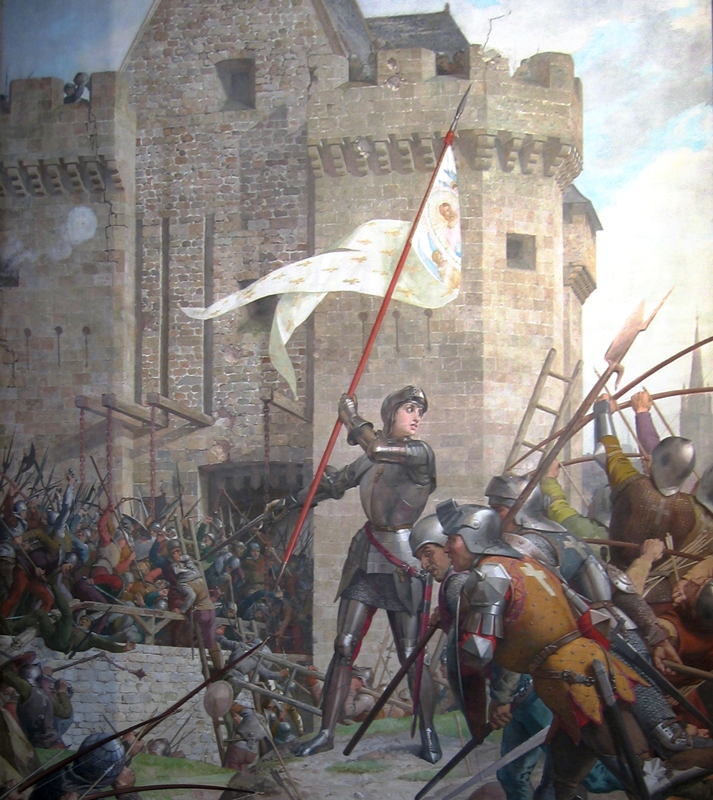
Much to everyone’s dismay, in less than 4 months, Joan released Orleans, won all of the battles and took Dauphin Carlos VII to Reims to be crowned, something unthinkable without her participation. The coronation of Carlos VII, on July 17, 1429 changed the course of French history, and Joan was responsible for triggering the end of the Hundred Years’ War, which happened shortly after.
Wherever she went, Joan affected everyone with her devotion, purity, and courage. According to her squire Gobert Thibault: “Joan was a good Christian; she enjoyed attending mass every day and would frequently take communion. She would get very irritated when hearing a blasphemy (…) in her troop, she was always with the soldiers, and I heard from those closest to her that they never desired her physically.” (Pernoud, 1996, p. 58).
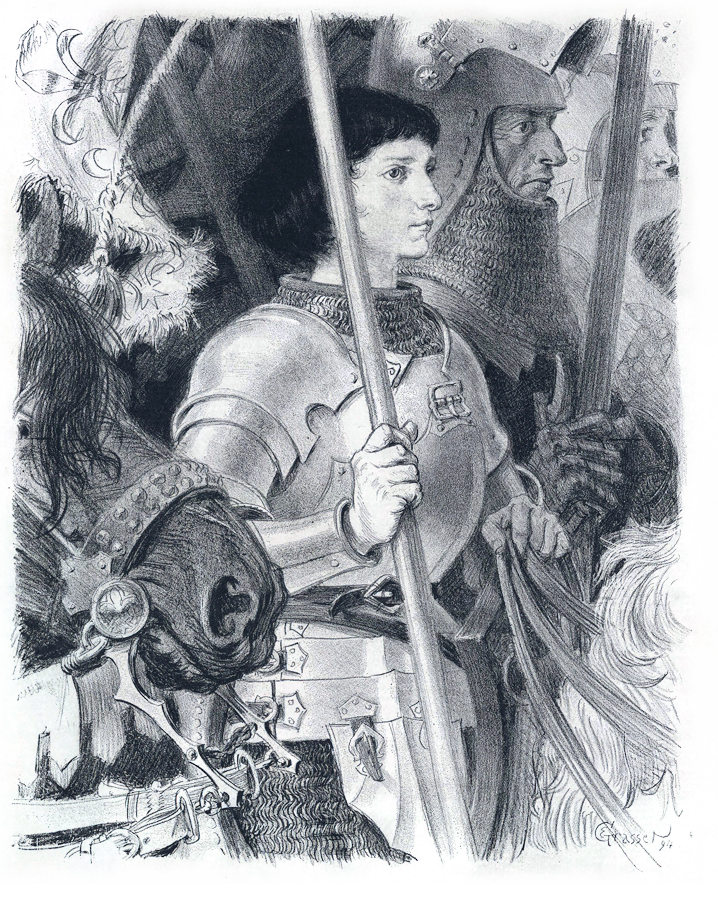
As a demonstration of the strength of her presence, in her first battle, “Warriors and members of the bourgeois of Orleans came to receive her, carrying a large number of torches and expressing so much joy, as if they had seen God himself descend among them (…) They, however, already felt quite comforted and as if freed by the divine grace that was said to be in that simple maiden that men, women and children contemplated very affectionately; it was a marvelous crowd, pressed together to touch her…” (Pernoud, 1996, p. 64).
After the Dauphin was crowned King, Joan lost the support she had up to then. As a result, in May of 1430, she was captured by French allies of England and sold to the English. She remained in prison for 10 months without anyone attempting to rescue her.
Joan had a trial of 4 months. Nothing was found to incriminate her, and she behaved haughtily during the entire process. In the end, upon a complete absence of evidence, Joan was condemned of heresy for wearing male clothing, which she argued was in self-defense against the possible assault of jailers.
On May 30, 1431, at 19 years of age, Joan of Arc was burned at the stake in public and her ashes thrown into the Seine River.
Her reputation began to be reestablished 18 years later, with interviews of 115 living witnesses including nobles, clergy and soldiers.
In 1920, nearly 500 years later, she was canonized without the need of a single miracle. The basis of her canonization were: the solidity of her piety, prudence of her judgments, her maiden-like demeanor, purity of her love for her homeland, meekness to the voices that came to her from Above, and submission to God in whose presence she lived her daily life.
Her moral leadership was evident, like her courage, or in Latin, coraticum (cor + atĭcum): the association of the word cor (heart) and the atĭcum suffix, which is used to indicate the action of the word preceding it.
Courage is one of the four cardinal virtues of human excellence as defined by Plato: Prudence (wisdom); Justice, Temperance, and Fortitude (courage and strength). To him, the heart is the seat of the emotions and courage means the action of the heart. Joan of Arc represented courage like no one else.
References:
Castor, Helen. Joana d´Arc: a surpreendente história da heroína que comandou o exército francês. Editora Gutenberg, 2021.
Pernoud, Regine. Joana D´Arc: a mulher forte. Paulinas, 1996.
https://artrianon.com/2019/05/30/obra-de-arte-da-semana-joana-darc-de-albert-lynch/ accessed on 27/10/2022.




